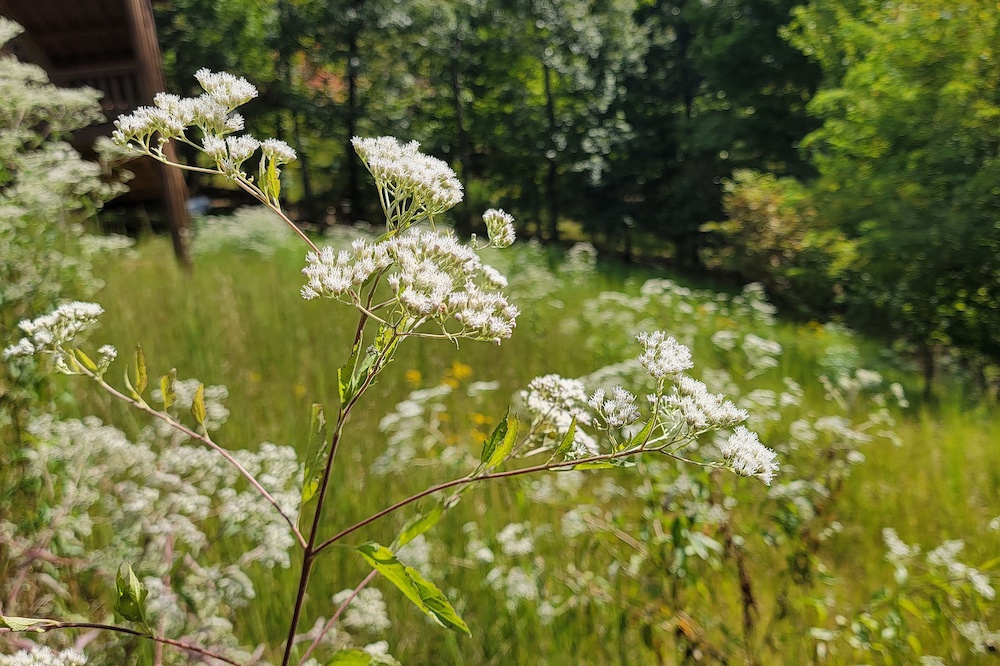With all the beauty of spring comes the nuisance of pollen.
What is pollen?
Pollen is the male part of a plant's life. It isn't good or bad. It's just there, in great volume, in the spring. Some people consider spring pollen season a bad time, especially if they are allergic to specific pollens.
Large pines surround us in our yards, along our streets and in our forests. These giant plants release huge amounts of pollen into the air every year to assure a new generation of pines.
Large pollens from trees like pine can get in the way and make a mess. But it's the small pollens of other trees that cause various symptoms of hay fever.
Don't blame the pines
Don't blame the pines for allergy attacks. Look to mold spores and weed pollens that are around all summer. Tree pollens have a short distribution period.
On warm, dry, windy days you can see yellow clouds of pine pollen billowing across the landscape. Two side wings hold these big pollen grains aloft. These wings also make pine pollen big enough to see.
Pine pollen, stained and photographed under a microscope, looks otherworldy. The wings help it fly through the air to get to pine cones where it helps ensure next year's young pine trees.
It also carries to your car, your windows and into your nose and eyes where it can irritate delicate membranes. But Coder said few people are allergic to pine pollen — most allergies are to other trees' pollen.
Pollen movement
As the wind blows, it sweeps pollen up into the air and carries it long distances. Pine pollen has its unique shape to perfectly match the aerodynamic shape of the female pine cone. The airborne pollen grains are swirled around the cone and tumble into the receptive base of each bract.
Because pine pollen is so big, we can see it is light yellow. Many windblown tree pollens are invisible.
The male pine cones, which dangle at the ends of lower branches, have many pollen sacks which produce and hold pollen. As the male cones mature, they nurture the pollen grains. Then on sunny, windy days with relatively low humidity, the pollen sacks split open.
Annoying, but not usually allergenic
The first place most people notice pine pollen is on their car. Smooth metal surfaces will sport a gritty, yellow dust. It accumulates in miniature drifts on pavements, patios and porches, too.
This yellow dust can be breathed into your nose and mouth. Few people, though, are actually allergic to the pine pollen. But many find it irritating in their eyes and aggravating on their cars and patios.
Other trees
A number of other trees use wind to carry small pollens across the landscape. The trees people have the most trouble with are oaks, walnuts and hickories. These pollens are small enough to cause allergic reactions. Fortunately, they're only around for a short time in the spring.
If tree pollens are driving you to distraction, there are a few things you can do. Stay indoors during peak pollen times, venturing out only on rainy days. Keep the house closed up to keep pollen from entering. Quickly rinse surfaces to remove the dust. But be careful. Some pollens will scratch surfaces.
The grit of pine pollen and the allergenic qualities of the other tree pollens last only a few weeks. This short time gives you a chance to prepare for the spores and weed pollens that will be with you until next fall.
Pollen is a part of life. It's the trees' investment in the future. It also clearly shows that spring is here. Smile as you sneeze — life is good.
Surviving pollen season
- Stay inside.
- Keep windows and doors shut.
- Rinse pollen off surfaces.






